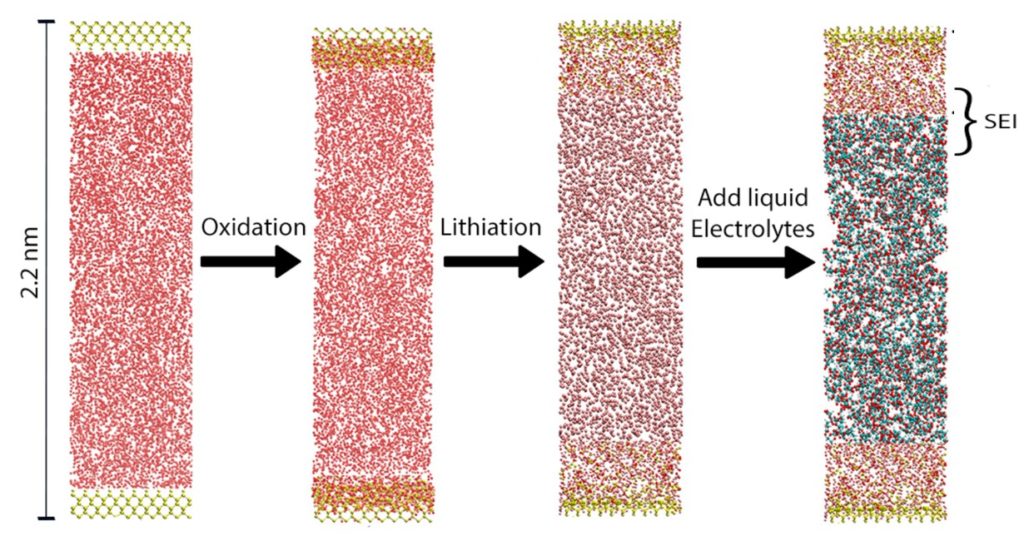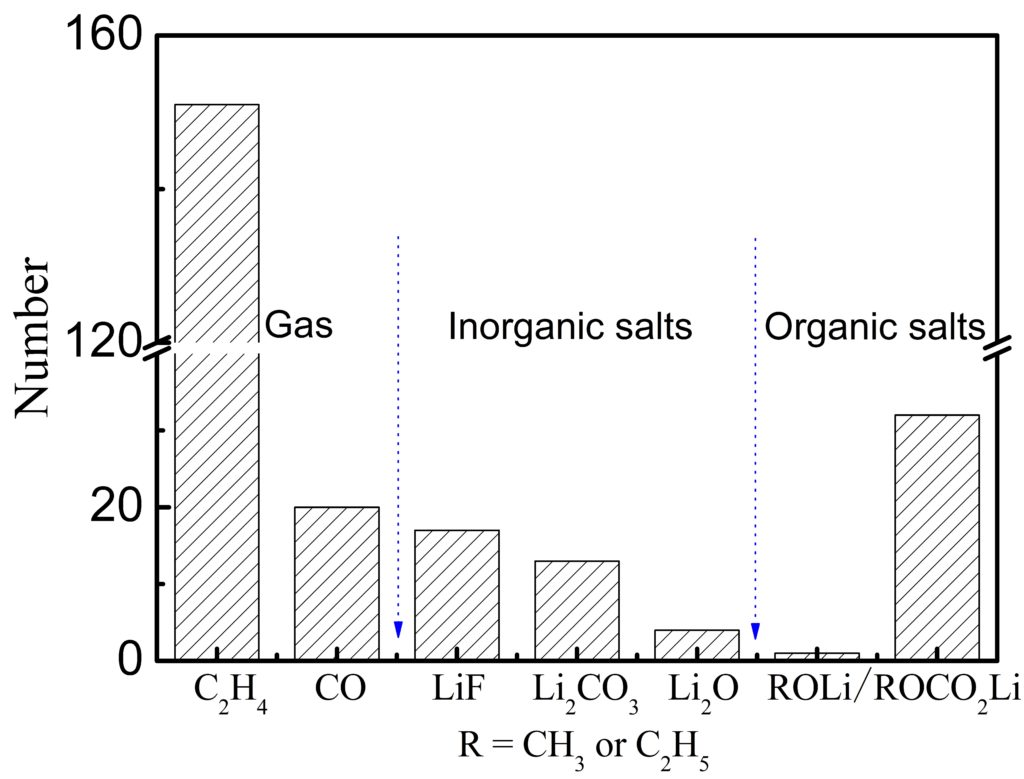Solid electrolyte interface formation in lithium-ion batteries with ReaxFF
Lithium-ion batteries (LIBs) are widely used in most portable chargeable electronics, such as laptops and cell phones, but also in electric vehicles. An essential part of LIBs is the solid electrolyte interface (SEI) which is a solid layer of decomposed organic solvent that forms on the first charge of the battery. The formation of a SEI on the electrode surface is crucial for cycle stability and durability of lithium-ion batteries (LIBs). However, the microscopic mechanism responsible for the growth of the SEI is unclear because of the difficulty in conducting the relevant experiments. SEIs prevent further decomposition of the organic solvent while maintaining sufficient ion conductivity and are an important factor in battery life and durability.

Professor Wang and coworkers used reactive molecular dynamics (ReaxFF) to analyze and recreate SEI formation as shown in Figure 1. ReaxFF-MD could be used to provide a protocol for the studies on SEI, in which ReaxFF is a general bond-order-dependent potential that provides accurate descriptions of bond breaking and bond formation, which approximately retains the accuracy of quantum chemistry and allows MD with computational costs similar to simple force fields, to handle the sizes of typical SEI films (typically 10 nm or more). Our ReaxFF simulations reproduced the experimental results well that SEI is composed of the trapped gas molecules, inorganic salts, and organic salts (Figure 2). The results found in the calculations are comparable to experimental results validating ReaxFF for studying SEI formation processes and making ReaxFF a promising computational chemistry tool for further SEI-related research.

Wang J, Liun Y, Tu Y, Wang Q, Reductive Decomposition of Solvents and Additives toward Solid-Electrolyte Interphase Formation in Lithium-Ion Battery, J. Phys. Chem. (2020).
Key conceptsbatteries materials science Reactivity ReaxFF